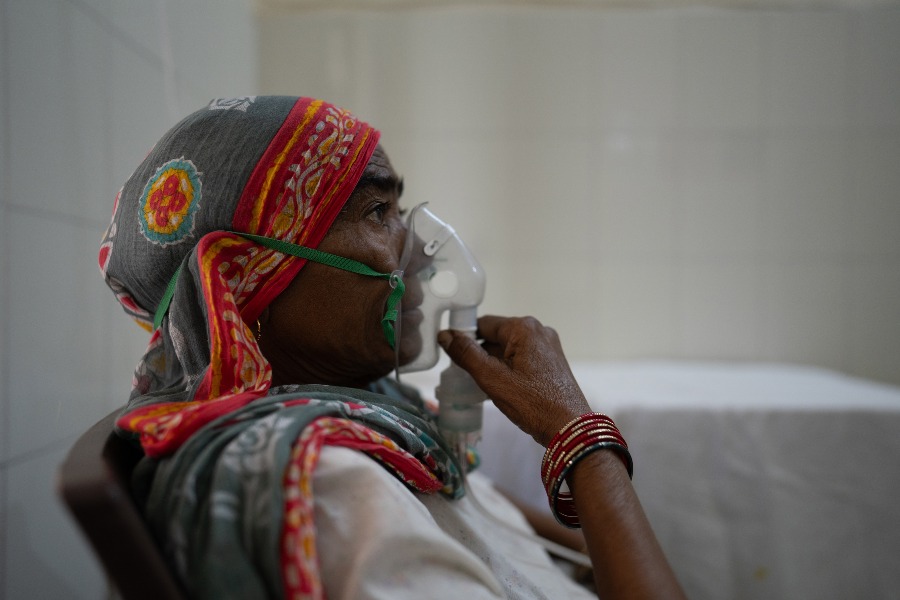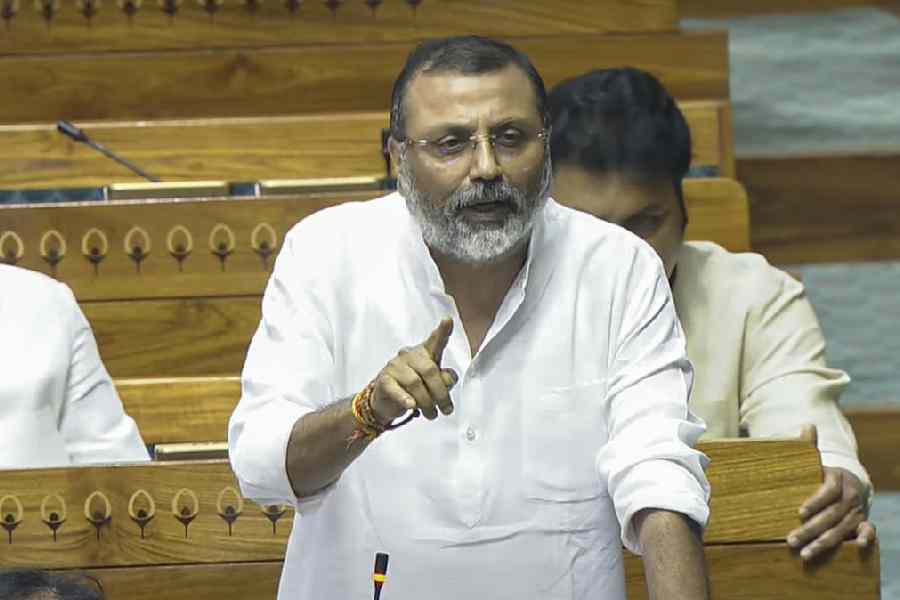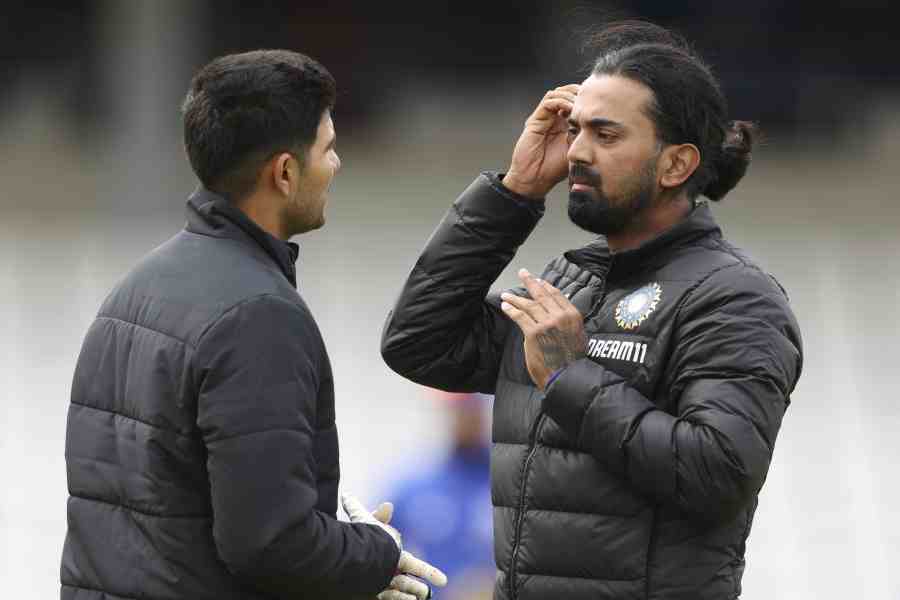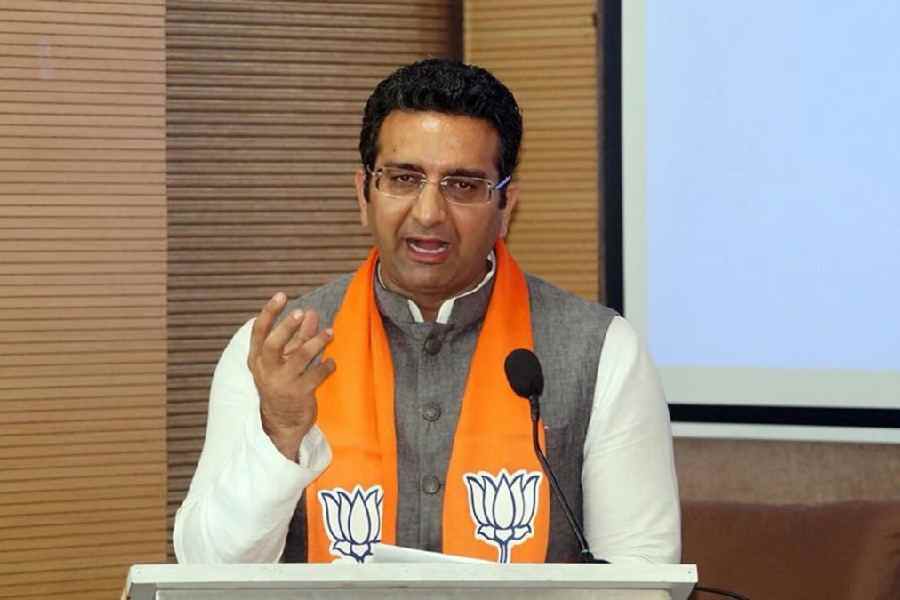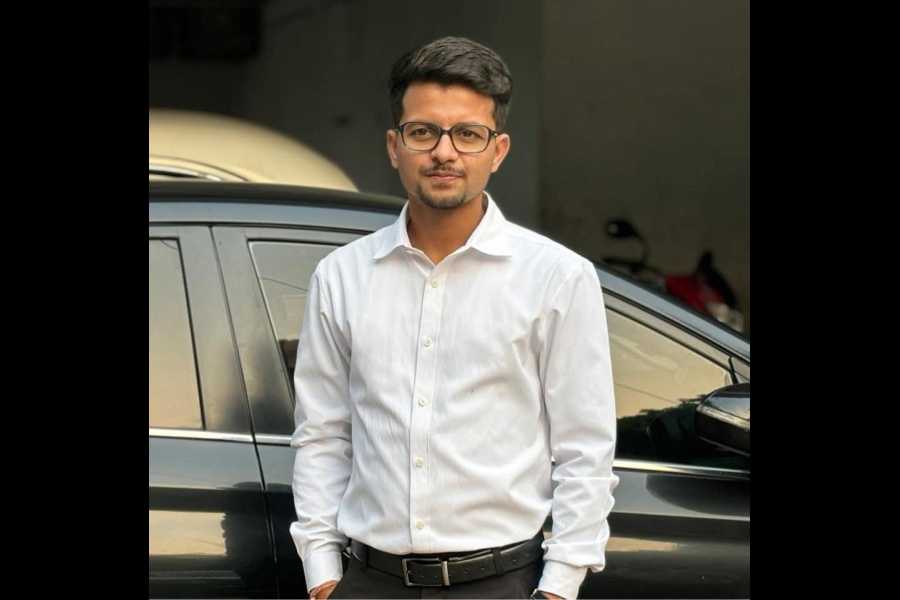 |
| Stealing the show: Vinay Kumar as the tiger in Adishakti?s Brihannala |
Drama where the spoken word is secondary formed the main attraction of Nandikar?s National Theatre Festival, underlining that theatre stimulates best when it frees your imagination. Also, these groups came from Sweden, Pondicherry and Assam, allowing audiences exposure to theatre from unfamiliar places, in tongues other than Hindi and Bengali.
Unluckily, Calcutta has not seen Veenapani Chawla?s work since her bandh-affected visit about 15 years ago. This trip included her latest productions under Adishakti, Pondicherry. Brihannala (presented by Hugli and Vision Comptech) lived up to the plaudits it has received everywhere. Chawla?s non-narrative thread of images and episodes (in English) uses the story of cross-dressed Arjuna to juxtapose male and female, time and space, the tiger and dog recounted by Brihannala. She unites physics and philosophy to reconcile all binaries, though the tiger?s death at the human hands it trusted evokes sorrow. But Vinay Kumar?s solo performance steals the show. I have rarely encountered such perfect acting: instant transformations of character, morphing before us from one face and figure to another, vocal control and mastery over Kalari martial art.
For Nandikar, Adishakti staged the newer Ganapati, totally different in concept. Chawla takes the most unusual course of relating the births of Martanda and Ganesh through rhythm, mainly the mizhavu pots in Kutiyattam. Speaking minimally in English, the musicians make their instruments talk instead, weaving intricate polyphonic textures parallelling the tales from creation to destruction to the start of the next cycle, just as in talas. The variations and improvisations suggest oral reinterpretations. Similarly, Chawla choreographs not physical movement here as much as the flurry of the drummers? hands. They (Suresh Kaliyath, Arvind Rane, Vinay Kumar and that rarity, a woman percussionist, Nimmy Raphael) are simply amazing, joined by Pascal Sieger on sax, an alien elephantine sound that ultimately gets integrated.
Nonverbal theatre found another exponent in Teater Pero, a young troupe from Stockholm exemplifying the alternative movement to conventional text-based theatre in Europe. Peter Engkvist directed Tongue-Tied, a funny, nonlinear exploration in English of life and relationships through mime and music. By their literally joint antics, Magnus Lundblad and Alejandro Bonnet revealed the bodily superiority of most Western performers thanks to professional training, which Indian actors generally lack. Tomas Hallonsten contributed accordion and trumpet to the collective.
In such high company, Sri Ram Vijay by Purbaranga (Guwahati) disappointed even though they adventurously chose the classic 16th-century musical drama in Sanskrit and Brajabuli by Sankaradeva, the Vaishnava saint and inventor of the traditional Ankiya Nat form. Gunakar Dev Goswami directed Jatin Goswami?s adaptation of this paean to Ram?s mythical early exploits in typical Ankiya Bhaona style, with nandi, purvaranga, sutradhar, singers and musicians, lyrical Satriya dance, entertaining farce for child viewers and colourful costumes. But since one can still see the genuine article in satra performances, why should we go to an urban production unless it offers some contemporary angle or reworking, which it did not? Purbaranga appears not to have thought through the rationale.





